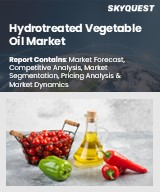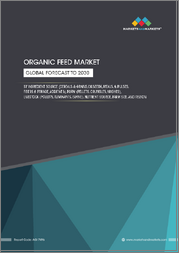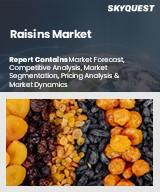
|
시장보고서
상품코드
1716329
세계의 종자 시장 : 유형별, 작물 유형별, 이용 가능성별, 종자 처리별, 종자 형질별, 지역별 분석 및 예측(-2032년)Seeds Market Forecasts to 2032 - Global Analysis By Type (Genetically Modified (GM) Seed and Conventional Seed), Crop Type (Cereals & Grains, Oilseeds, Fruit & Vegetable Crops and Other Crops), Availability, Seed Treatment, Seed Trait and By Geography |
||||||
Stratistics MRC에 따르면 세계의 종자 시장은 2025년에 788억 달러에 달하고 예측 기간 동안 CAGR은 7.3%를 나타내 2032년까지는 1,291억 달러에 이를 것으로 전망됩니다.
종자는 식물의 생식 단위이며 적절한 조건에서 새로운 식물로 개발할 수 있습니다. 종자는 세 가지 주요 부분으로 구성됩니다. 종자는 수분과 수정의 과정을 거쳐 꽃을 피우는 식물로 할 수 있습니다. 성숙하면 종자는 바람, 물, 동물 등 여러가지 메커니즘에 의해 살포됩니다.
유엔 식량농업기관(FAO)의 조사에 따르면 미국, 캐나다, 인도, 중국 등 국가에서 생산량이 증가하면 2030년까지 곡물 생산량은 약 12%라는 매우 빠른 속도로 증가하게 됩니다.
인구 증가와 식량 수요
인구 증가와 식량 소비 증가는 종자 시장의 중요한 촉진요인입니다. 종자, 특히 질병과 기후 변화에 대한 내성을 가진 종자에 대한 수요의 결과입니다. 또, 도시화나 식생활의 변화에 의해 다양한 작물이 필요하게 되어, 세계의 식량 안보의 문제에 대처하기 위해, 종자 산업은 한층 더 확산을 보이고 있습니다.
고품질 종자의 높은 비용
우수한 종자의 높은 비용은 종자 시장에 큰 장벽을 초래하고 소규모 농부의 접근을 제한하고 생산 비용을 늘리고 있습니다. 농부가 거칠고 저렴한 종자를 사용할 수 있기 때문에 농작물의 수율이 감소하고 수확량도 감소합니다. 그 결과 부의 불평등이 악화되어 농업에 대한 투자가 억제되고 특히 신흥국에서는 식량안보가 위험해집니다.
기술 진보
기술의 비약적인 진보는 높은 수율, 내병성, 기후 적응성이 있는 종자의 생성을 가능하게 하고, 종자 시장을 극적으로 변화시키고 있습니다. 종자 처리 기술, 정밀 농업, 유전 공학의 진보로 작물의 지속가능성과 생산량이 증가하고 있습니다. 무인 항공기와 센서는 더 나은 종자 배치 및 모니터링을 가능하게 함으로써 효율을 향상시키는 스마트 농업 장비의 예입니다. 이러한 개발은 세계적으로 높아지는 식량 수요를 충족시키는 것으로, 연구에 더 많은 자금이 소비되어 종자 시장의 확대를 뒷받침하고 있습니다.
규제 문제
종자 시장의 규제 문제는 종자의 생산, 유통 및 사용에 관한 엄격한 규칙을 부과함으로써 성장을 현저하게 저해할 수 있습니다. 이러한 규제는 신제품 시장 진입을 제한하고, 승인 프로세스를 지연시키고, 기업의 규정 준수 비용을 증가시킬 수 있습니다. 또한 지역 간의 일관성 없는 규제는 국제 무역의 장벽이 되고, 기술 혁신을 제한하고, 고품질 종자의 입수를 제한하며, 결국 농가의 생산성과 시장 경쟁에 영향을 미칠 수 있습니다.
COVID-19의 영향
COVID-19의 대유행은 종자 시장을 크게 혼란시켜 공급망의 지연, 생산 정지, 노동력 부족을 일으켰습니다. 움직임이 정체되는 가운데, 종자 수요도 변동해, 품부족에 직면한 지역도 있으면, 가정 채소원 증가에 의해 수요가 증가한 지역도 있었습니다.
예측 기간 동안 미처리 분야가 최대가 될 전망
미처리 분야는 예측 기간 동안 가장 큰 시장 점유율을 차지할 것으로 예측됩니다. 또한, 미처리 종자는 지속 가능한 유기 농업의 요구에 부합하고 있기 때문에 시장의 확대와 종자 기술의 혁신을 뒷받침하고 있습니다.
살충제 내성 부문은 예측 기간 중 가장 높은 CAGR이 예상됩니다.
예측 기간 동안 살충제 내성 분야가 가장 높은 성장률을 보일 것으로 예측됩니다. 또한, 이러한 종자는 화학농약에의 의존을 줄이고, 작물의 수율과 농가의 수익성을 향상시키는 것과 동시에, 환경의 지속가능성을 촉진합니다.
최대 점유율을 가진 지역
예측 기간 동안 아시아태평양은 식량 생산 성장을 가속하고 지속가능성을 높여 최대 시장 점유율을 차지할 것으로 예측됩니다. 높은 수율, 해충 저항성, 기후 적응성 작물에 대한 수요가 높아지는 가운데, 시장은 종자 기술의 혁신을 촉진하고 있습니다. 그것은 수백만의 농민의 삶을 지원하고 농촌 경제를 활성화하고 식량 안보를 촉진합니다. 게다가 유기농 종자와 하이브리드 종자로의 전환은 보다 지속가능한 농업 실천에 기여하며, 이 지역의 생산성을 향상시키면서 환경에 대한 발자취를 줄이고 있습니다.
CAGR이 가장 높은 지역 :
예측 기간 동안 작물 다양화와 지속 가능한 농업에 대한 관심이 높아짐에 따라 북미가 가장 높은 CAGR을 나타낼 것으로 예측됩니다. 새로운 종자기술, 기후 변화에 강한 작물, 식량안보의 중시가 높아짐에 따라 시장이 빠르게 변화하고 있습니다. 종자의 품질, 생산량, 내병성, 내충성을 향상시키기 위해 기업은 연구 개발에 자금을 투자하고 있습니다. 또한 자원 효율성 요구와 유기농업의 인기 증가도 이 분야의 이 시장의 유익하고 흥미로운 효과를 뒷받침하고 있습니다.
무료 사용자 지정 오퍼링 :
이 보고서를 구독하는 고객은 다음 무료 맞춤설정 옵션 중 하나를 사용할 수 있습니다.
- 기업 프로파일
- 추가 시장 기업의 종합적 프로파일링(3개사까지)
- 주요 기업의 SWOT 분석(3개사까지)
- 지역 세분화
- 고객의 관심에 응한 주요국 시장 추계·예측·CAGR(주 : 타당성 확인에 따름)
- 경쟁 벤치마킹
- 제품 포트폴리오, 지리적 존재, 전략적 제휴에 기반한 주요 기업 벤치마킹
목차
제1장 주요 요약
제2장 서문
- 개요
- 이해관계자
- 조사 범위
- 조사 방법
- 데이터 마이닝
- 데이터 분석
- 데이터 검증
- 조사 접근
- 조사 자료
- 1차 조사 정보원
- 2차 조사 정보원
- 전제조건
제3장 시장 동향 분석
- 성장 촉진요인
- 성장 억제요인
- 기회
- 위협
- 신흥 시장
- COVID-19의 영향
제4장 Porter's Five Forces 분석
- 공급기업의 협상력
- 구매자의 협상력
- 대체품의 위협
- 신규 참가업체의 위협
- 경쟁 기업간 경쟁 관계
제5장 세계의 종자 시장 : 유형별
- 유전자 변형(GM) 종자
- 기존 종자
제6장 세계의 종자 시장 : 작물 유형별
- 곡물
- 보리
- 옥수수
- 쌀
- 밀
- 유지 종자
- 대두
- 해바라기
- 과일 및 채소 작물
- 토마토
- 오쿠라
- 칠리
- 양배추
- 기타 작물
- 사료 작물
- 꽃씨
제7장 세계의 종자 시장 : 이용 가능성별
- 상업용 종자
- 저장된 종자
제8장 세계의 종자 시장 : 종자 처리별
- 처리됨
- 미처리
제9장 세계의 종자 시장 : 종자 형질별
- 제초제 내성
- 살충제 내성
- 기타 중첩 특성
제10장 세계의 종자 시장 : 지역별
- 북미
- 미국
- 캐나다
- 멕시코
- 유럽
- 독일
- 영국
- 이탈리아
- 프랑스
- 스페인
- 기타 유럽
- 아시아태평양
- 일본
- 중국
- 인도
- 호주
- 뉴질랜드
- 한국
- 기타 아시아태평양
- 남미
- 아르헨티나
- 브라질
- 칠레
- 기타 남미
- 중동 및 아프리카
- 사우디아라비아
- 아랍에미리트(UAE)
- 카타르
- 남아프리카
- 기타 중동 및 아프리카
제11장 주요 발전
- 계약, 파트너십, 협업, 합작투자
- 인수와 합병
- 신제품 발매
- 사업 확대
- 기타 주요 전략
제12장 기업 프로파일링
- Bayer AG
- Corteva Agriscience
- Syngenta Group
- BASF SE
- KWS SAAT SE & Co. KGaA
- Sakata Seed Corporation
- Rijk Zwaan
- Groupe Limagrain
- DLF Seeds A/S
- Takii & Co., Ltd.
- Enza Zaden
- East-West Seed
- UPL Limited
- Bejo Zaden BV
- Vilmorin & Cie
- Florimond Desprez
- Nongwoo Bio Co., Ltd.
- Yuan Longping High-Tech Agriculture Co., Ltd.
According to Stratistics MRC, the Global Seeds Market is accounted for $78.8 billion in 2025 and is expected to reach $129.1 billion by 2032 growing at a CAGR of 7.3% during the forecast period. Seeds are the reproductive units of plants, capable of developing into new plants under suitable conditions. They consist of three main parts: the embryo, which is the young plant; the endosperm, a nutrient-rich tissue that feeds the embryo; and the seed coat, which protects the seed from damage and dehydration. Seeds are produced through the process of pollination and fertilization in flowering plants. Once mature, seeds are dispersed by various mechanisms such as wind, water, and animals. They play a crucial role in the continuation of plant species and contribute to biodiversity, food, and ecosystem balance.
According to a survey by the Food and Agriculture Organization (FAO), increasing production in nations like the US, Canada, India, and China would cause cereal production to rise at an extraordinarily rapid rate of approx. 12% by 2030.
Market Dynamics:
Driver:
Population Growth and Food Demand
Population increase and rising food consumption are significant drivers of the seeds market. Farmers are being forced to use higher-yielding and genetically modified seeds as the world's population grows and the demand for more food production increases. Innovations in seed technology and agricultural methods are a result of this demand for seeds, particularly those that are resistant to diseases and climate change. Urbanization and changing dietary habits also lead to a variety of crop requirements, which further broadens the seed industry to address issues with global food security.
Restraint:
High Cost of Quality Seeds
The high cost of excellent seeds poses a substantial barrier in the seed market, limiting access for small-scale farmers and raising production costs. This reduces agricultural output because farmers might use inferior, less expensive seeds, which would result in lower crop yields and subpar harvests. As a result, it worsens wealth inequality, deters farming investment, and jeopardizes food security, especially in emerging nations.
Opportunity:
Technological Advancements
Technological breakthroughs are drastically changing the seeds market by allowing for the generation of high-yielding, disease-resistant, and climate-adaptable seeds. Crop sustainability and production have increased due to advancements in seed treatment technologies, precision agriculture, and genetic engineering. Drones and sensors are examples of smart agricultural instruments that improve efficiency by enabling better seed placement and monitoring. These developments meet the rising need for food around the world, which encourages more money to be spent on research and propels the market for seeds to expand.
Threat:
Regulatory Challenges
Regulatory challenges in the seed market can significantly hinder growth by imposing strict rules on seed production, distribution, and use. These regulations may limit market access for new products, delay approval processes, and increase compliance costs for companies. Inconsistent regulations across regions can also create barriers to international trade, restricting innovation and limiting the availability of high-quality seeds, ultimately affecting farmers' productivity and market competitiveness.
Covid-19 Impact
The COVID-19 pandemic significantly disrupted the seeds market, causing supply chain delays, production halts, and a shortage of labor. Lockdowns and restrictions hindered distribution, affecting both local and global trade. As agricultural activities slowed, demand for seeds fluctuated, with some regions facing scarcity while others saw a rise in demand due to increased home gardening. Overall, the pandemic highlighted the vulnerability of the agricultural supply chain.
The untreated segment is expected to be the largest during the forecast period
The untreated segment is expected to account for the largest market share during the forecast period, because these seeds appeal to people who want to lower production expenses because they are frequently devoid of costly treatments. They make farming operations more flexible, particularly in areas where certain soil conditions or natural pest management can be used. Additionally, untreated seeds meet the needs of sustainable and organic farming, which propels market expansion and innovation in seed technology.
The insecticide resistant segment is expected to have the highest CAGR during the forecast period
Over the forecast period, the insecticide resistant segment is predicted to witness the highest growth rate, as pests become more resistant to traditional insecticides, there is a growing demand for seeds that possess inherent resistance to these pests. This stimulates research into genetically modified or naturally resistant seed varieties, promoting sustainable agricultural practices. Additionally, such seeds help reduce reliance on chemical pesticides, improving crop yields and farmer profitability while fostering environmental sustainability. This trend is creating new growth opportunities in the seed industry.
Region with largest share:
During the forecast period, the Asia Pacific region is expected to hold the largest market share due to driving growth in food production and enhancing sustainability. With increasing demand for high-yielding, pest-resistant, and climate-adaptive crops, the market fosters innovation in seed technologies. It supports the livelihoods of millions of farmers, boosts rural economies, and promotes food security. Additionally, the shift toward organic and hybrid seeds contributes to more sustainable farming practices, reducing environmental footprints while increasing productivity in the region.
Region with highest CAGR:
Over the forecast period, the North America region is anticipated to exhibit the highest CAGR, owing to growing interest in crop diversification and sustainable agriculture. The market is changing quickly because to new seed technologies, climate-resilient crops, and an increased emphasis on food security. To improve seed quality, production, and disease and insect resistance, businesses are spending money on research and development. The demand for resource efficiency and the increasing popularity of organic farming are also fueling this market's beneficial and stimulating effects in the area.
Key players in the market
Some of the key players profiled in the Seeds Market include Bayer AG, Corteva Agriscience, Syngenta Group, BASF SE, KWS SAAT SE & Co. KGaA, Sakata Seed Corporation, Rijk Zwaan, Groupe Limagrain, DLF Seeds A/S, Takii & Co., Ltd., Enza Zaden, East-West Seed, UPL Limited, Bejo Zaden B.V., Vilmorin & Cie,Florimond Desprez, Bio Co., Ltd. and Yuan Longping High-Tech Agriculture Co., Ltd.
Key Developments:
In October 2024, BASF made a strategic partnership with Aspen Aerogels to enhance its aerogel product offerings and expand its market reach. This partnership is set to drive innovation in aerogel technologies, particularly in high-performance insulation materials.
In July 2024, BASF launched Haptex 4.0, an innovative polyurethane solution for the production of synthetic leather that is 100% recyclable. Synthetic leather made with Haptex 4.0 and polyethylene terephthalate (PET) fabric can be recycled together using an innovative formulation and recycling technical pathway without the need of layer peel-off process.
In July 2024, BASF successfully commissioned a pilot plant dedicated to producing SLENTITE(R), a cutting-edge polyurethane-based aerogel insulation panel. This innovative product is designed to meet the increasing demand for efficient thermal insulation in construction, offering a unique combination of lightweight characteristics and mechanical strength.
Types Covered:
- Genetically Modified (GM) Seed
- Conventional Seed
Crop Types Covered:
- Cereals & Grains
- Oilseeds
- Fruit & Vegetable Crops
- Other Crops
Availabilities Covered:
- Commercial Seeds
- Saved Seeds
Seed Treatments Covered:
- Treated
- Untreated
Seed Traits Covered:
- Herbicide Tolerant
- Insecticide Resistant
- Other Stacked Traits
Regions Covered:
- North America
- US
- Canada
- Mexico
- Europe
- Germany
- UK
- Italy
- France
- Spain
- Rest of Europe
- Asia Pacific
- Japan
- China
- India
- Australia
- New Zealand
- South Korea
- Rest of Asia Pacific
- South America
- Argentina
- Brazil
- Chile
- Rest of South America
- Middle East & Africa
- Saudi Arabia
- UAE
- Qatar
- South Africa
- Rest of Middle East & Africa
What our report offers:
- Market share assessments for the regional and country-level segments
- Strategic recommendations for the new entrants
- Covers Market data for the years 2022, 2023, 2024, 2026, and 2030
- Market Trends (Drivers, Constraints, Opportunities, Threats, Challenges, Investment Opportunities, and recommendations)
- Strategic recommendations in key business segments based on the market estimations
- Competitive landscaping mapping the key common trends
- Company profiling with detailed strategies, financials, and recent developments
- Supply chain trends mapping the latest technological advancements
Free Customization Offerings:
All the customers of this report will be entitled to receive one of the following free customization options:
- Company Profiling
- Comprehensive profiling of additional market players (up to 3)
- SWOT Analysis of key players (up to 3)
- Regional Segmentation
- Market estimations, Forecasts and CAGR of any prominent country as per the client's interest (Note: Depends on feasibility check)
- Competitive Benchmarking
- Benchmarking of key players based on product portfolio, geographical presence, and strategic alliances
Table of Contents
1 Executive Summary
2 Preface
- 2.1 Abstract
- 2.2 Stake Holders
- 2.3 Research Scope
- 2.4 Research Methodology
- 2.4.1 Data Mining
- 2.4.2 Data Analysis
- 2.4.3 Data Validation
- 2.4.4 Research Approach
- 2.5 Research Sources
- 2.5.1 Primary Research Sources
- 2.5.2 Secondary Research Sources
- 2.5.3 Assumptions
3 Market Trend Analysis
- 3.1 Introduction
- 3.2 Drivers
- 3.3 Restraints
- 3.4 Opportunities
- 3.5 Threats
- 3.6 Emerging Markets
- 3.7 Impact of Covid-19
4 Porters Five Force Analysis
- 4.1 Bargaining power of suppliers
- 4.2 Bargaining power of buyers
- 4.3 Threat of substitutes
- 4.4 Threat of new entrants
- 4.5 Competitive rivalry
5 Global Seeds Market, By Type
- 5.1 Introduction
- 5.2 Genetically Modified (GM) Seed
- 5.3 Conventional Seed
6 Global Seeds Market, By Crop Type
- 6.1 Introduction
- 6.2 Cereals & Grains
- 6.2.1 Barley
- 6.2.2 Corn
- 6.2.3 Rice
- 6.2.4 Wheat
- 6.3 Oilseeds
- 6.3.1 Soybean
- 6.3.2 Sunflower
- 6.4 Fruit & Vegetable Crops
- 6.4.1 Tomato
- 6.4.2 Okra
- 6.4.3 Chili
- 6.4.4 Cabbage
- 6.5 Other Crops
- 6.5.1 Forage Crops
- 6.5.2 Flower Seeds
7 Global Seeds Market, By Availability
- 7.1 Introduction
- 7.2 Commercial Seeds
- 7.3 Saved Seeds
8 Global Seeds Market, By Seed Treatment
- 8.1 Introduction
- 8.2 Treated
- 8.3 Untreated
9 Global Seeds Market, By Seed Trait
- 9.1 Introduction
- 9.2 Herbicide Tolerant
- 9.3 Insecticide Resistant
- 9.4 Other Stacked Traits
10 Global Seeds Market, By Geography
- 10.1 Introduction
- 10.2 North America
- 10.2.1 US
- 10.2.2 Canada
- 10.2.3 Mexico
- 10.3 Europe
- 10.3.1 Germany
- 10.3.2 UK
- 10.3.3 Italy
- 10.3.4 France
- 10.3.5 Spain
- 10.3.6 Rest of Europe
- 10.4 Asia Pacific
- 10.4.1 Japan
- 10.4.2 China
- 10.4.3 India
- 10.4.4 Australia
- 10.4.5 New Zealand
- 10.4.6 South Korea
- 10.4.7 Rest of Asia Pacific
- 10.5 South America
- 10.5.1 Argentina
- 10.5.2 Brazil
- 10.5.3 Chile
- 10.5.4 Rest of South America
- 10.6 Middle East & Africa
- 10.6.1 Saudi Arabia
- 10.6.2 UAE
- 10.6.3 Qatar
- 10.6.4 South Africa
- 10.6.5 Rest of Middle East & Africa
11 Key Developments
- 11.1 Agreements, Partnerships, Collaborations and Joint Ventures
- 11.2 Acquisitions & Mergers
- 11.3 New Product Launch
- 11.4 Expansions
- 11.5 Other Key Strategies
12 Company Profiling
- 12.1 Bayer AG
- 12.2 Corteva Agriscience
- 12.3 Syngenta Group
- 12.4 BASF SE
- 12.5 KWS SAAT SE & Co. KGaA
- 12.6 Sakata Seed Corporation
- 12.7 Rijk Zwaan
- 12.8 Groupe Limagrain
- 12.9 DLF Seeds A/S
- 12.10 Takii & Co., Ltd.
- 12.11 Enza Zaden
- 12.12 East-West Seed
- 12.13 UPL Limited
- 12.14 Bejo Zaden B.V.
- 12.15 Vilmorin & Cie
- 12.16 Florimond Desprez
- 12.17 Nongwoo Bio Co., Ltd.
- 12.18 Yuan Longping High-Tech Agriculture Co., Ltd.



















